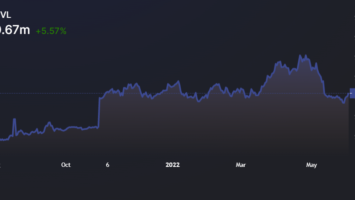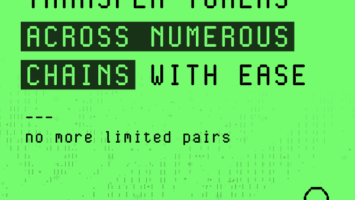After the Taliban took full control of Afghanistan in August last year, many international non-governmental organizations and services stopped operating in the country. Among them were payment services like Western Union and Swift.
Many Afghans subsequently began to learn about cryptocurrencies and the underlying blockchain technology to — at the very least — receive remittances from abroad. As electronic payment services like PayPal and Venmo have never been available in the 5,000-year-old country, Afghans have lost many opportunities in the online business world.
“We lost many opportunities like blogging, affiliate marketing and online dropshipping because most of them pay with PayPal,” Heshmat Aswadi, a local crypto trader, told Cointelegraph in an interview. “I learned a lot about blogging but it was of no use since I could not get paid online.”
Aswadi is studying business administration at Herat University and wanted to create a fintech blog but as he researched on how to get paid, the 22-year-old lost hope.
He later came to know about cryptocurrencies “which was one of the best things to ever happen to him,” he said. Aswadi learned as he went as the crypto industry grew in mid-2021. He now trades small amounts of digital assets that allow him to make some extra money.
According to Aswadi, banks and governments, especially developing countries like Afghanistan and Iran, must consider using digital currencies as a legal tender. “They could at least use a central bank digital currency,” he added.
“Although there is no need for our government to spend extra money on a central bank digital currency project, if they don’t want decentralized assets, a CBDC could still be an option.”
Remittances
When the Taliban assumed power, money transfer services like Western Union and Swift stopped their operations in the country, leaving many Afghans who got money from relatives abroad without a source of income. Currently, the only way to receive money from other countries is by using crypto.
During the crypto boom in 2021, Afghanistan was ranked 20th among 154 countries in Chainalysis’ 2021 Crypto Adoption Index.
Ali Rahnavard, a local crypto dealer and trader in Herat, one of the largest cities of Afghanistan, says he saw immense growth in the number of Afghans using cryptocurrencies. Rahnavard said that he saw his customers increase by “ten times” in the past year.
“The main reason behind this growth is that people needed to find a way to receive money from their family and friends who live in other countries,” Rahnavard told Cointelegraph.
“It’s much cheaper and faster” than the previous payment systems like Western Union, Rahnavard says.
In addition to trading, he has been teaching Afghans how to trade and use cryptocurrencies for the past four years. This knowledge would be useful if the country’s Taliban government decides to start using crypto to open up e-commerce in the country.
“Crypto could pave the way for the Taliban to get back to international business as well.” he said, “While the Taliban don’t seem to have the necessary knowledge on how to use blockchain technology at the moment, they could at least help by not banning cryptocurrencies.”


How is crypto used in Afghanistan?
In November 2021, Binance announced that it will not support Swift bank transfers to user accounts in a long list of countries including Afghanistan. Since most people in the country use Binance, it became difficult to deposit or withdraw crypto to or from the crypto exchange.
Currently, for the customers to get crypto, they go to a crypto dealer’s shop where they pay the amount in the local fiat currency, afghanis, or U.S. dollars.
In order for the dealer to get cryptocurrency, he needs to contact someone abroad to send crypto to his wallet. The dealer usually uses a local Hawala system to deposit the money to the sender’s bank account. The reason dealers don’t use credit or debit cards is that they charge around 11% for international purchases, according to Rahnavard.
The dealer then asks for the customer’s wallet address and sends the crypto, mostly Tether (USDT).
Did the Taliban ban crypto?
The Taliban still haven’t announced any regulations or bans regarding digital currencies. If a top Islamic scholar says that crypto is haram (forbidden), the Taliban would ban it “without thinking twice,” Rahnavard said. If they consider it halal (permissible), “we might use the best tech in the world, forever,” he added.
One of the biggest blocks on the way to crypto’s mass adoption in Afghanistan is the low literacy rate: Only 43% of Afghanistan’s population is literate and an even smaller number have regular access to the internet.
A crypto trader anonymously told Cointelegraph:
“Cryptocurrencies could be our only chance and window to true financial freedom. With all the problems we have in Afghanistan, it’s obviously very hard to teach everyone about crypto but it is not impossible.”
“What I love about decentralization is that it takes the power from governments and gives back to the people,” they added.


Crypto donations
The Taliban restricted bank account withdrawals as they took power in an attempt to address the cash shortage caused by the United States sanctions. Consequently, millions of Afghans could not get food. Some even tried to sell their children which led to international media coverage and opening the door to donations.
In September of last year, a nonfungible token (NFT) project started by Bookblocks.io and the “Women for Afghan Women” organization. They created digital art to support the education of women in Afghanistan and the ones arriving in the United States as refugees.
“This is a generation that grew up hopeful and dreaming about their future through educational opportunities,” said Naheed Samadi Bahram, Women for Afghan Women’s U.S. country director. “We are committed to serving Afghan women and girls in Afghanistan and Afghan refugees arriving in the U.S.”
Another social activist and entrepreneur, Fereshteh Forough, has sent cryptocurrencies to Afghan girls in need.
Forough is the founder and CEO of a coding academy for girls in Afghanistan called Code to Inspire. The academy was started in 2015 in Herat, Afghanistan.
According to Forough, 350 girls graduated Code to Inspire and 65% of them started their careers to put food on their tables. “The girls texted me that all of them had lost their jobs because of the Taliban’s policies,” Forough said. “And, as the sole breadwinners, their families were falling apart.”
“We found that actually, there are a bunch of local money exchanges in the financial district of Herat that are accepting crypto and they can cash it out for you in either afghanis or dollars,” Forough said.
She then helped 100 girls through Code to Inspire to create Binance and Trust Wallet accounts to receive cryptocurrency as their payments and exchange their digital assets for fiat in a local crypto exchange.
Forough is not the only one helping Afghans get paid in crypto. Roya Mahboob is the CEO of Afghan Citadel Software Company and pays her employees in digital currencies. She had previously spoken about her role and was featured for her pact to make a difference:
“If young people can learn about computers, they can learn about Bitcoin. And now everybody wants to learn how to access Bitcoin. They need to.”
Much more to come
Since August last year, nothing has been the same, not even the country’s name which changed from the Islamic Republic of Afghanistan to the Islamic Emirate of Afghanistan. Many NGOs left the country and many lost their jobs, leading to a financial crisis and, nonetheless, starvation.
The only way some families could live was to get money from abroad but without cryptocurrencies, it’s almost impossible now.
“Other countries learn about crypto because it’s a new technology and want to learn how to use crypto and blockchain to their favor,” Rahnavard said. “But, it’s different in Afghanistan. We must and need to learn about crypto and its underlying technology because if we don’t, I don’t know what bigger disaster should be expected.”






















Comments (No)